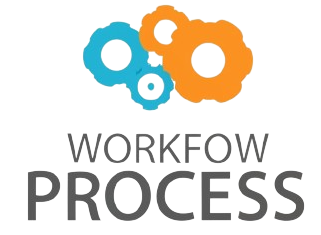LangChain and LangGraph represent cutting-edge technologies that are reshaping how developers interact with large language models (LLMs) like GPT-4. These frameworks enable more dynamic, context-aware, and structured approaches to building AI-driven applications. As AI becomes increasingly embedded in everyday tasks—from customer support to data analysis—tools like LangChain and LangGraph provide essential mechanisms to manage complex workflows and enhance the utility of language models. In this article, we will explore how these technologies work, their core functionalities, and practical applications. By understanding their strengths and distinctions, developers and businesses can better leverage AI capabilities to create smarter, more reliable, and scalable solutions.
Understanding LangChain: focused chaining of LLM tasks
LangChain is a framework designed to enhance LLMs by connecting them in a chain of logical steps that can communicate and build upon previous outputs. Instead of a single query-response interaction, LangChain allows developers to design multi-step workflows that integrate various tools, APIs, and data sources. This chaining enables the AI to handle more complex reasoning, follow contextual instructions, and perform iterative refinement of output.
Real-world example: Imagine a customer service chatbot that first gathers user information, then searches a product database, and finally generates personalized troubleshooting advice. LangChain allows chaining these tasks so the language model can seamlessly move from understanding the query to retrieving precise data and crafting a solution tailored to the user’s case.
Exploring LangGraph: visualizing and orchestrating AI workflows
While LangChain organizes tasks linearly or in sequences, LangGraph introduces a graphical layer that visually maps the decision-making pipeline and data flow across various LLM operations. This visualization helps developers create complex, branched workflows—almost like a flowchart—with better clarity and control over interactions.
Practical case: A health tech company wants to build an AI assistant that processes patient symptoms, suggests diagnostic tests, and then recommends specialists depending on the results. Using LangGraph, the development team can design nodes representing symptom analysis, test recommendation, and specialist selection, connecting them visually to track how data flows through the system.
Integrating LangChain and LangGraph for robust applications
LangChain and LangGraph often complement each other. LangChain offers the building blocks for scripting multi-step LLM processes, while LangGraph provides a dashboard-like interface to coordinate and monitor these processes. Together, they enable more robust application development that balances programmatic control with intuitive design.
Example in action: An e-commerce platform implements an AI-powered recommendation engine. LangChain scripts the logic for collecting user preferences, analyzing browsing history, and generating product suggestions. LangGraph overlays the workflow structure, allowing developers to tweak decision paths, integrate new data sources, and visualize real-time system performance to optimize user engagement.
Benefits and challenges of using LangChain and LangGraph
Both technologies empower developers to leverage LLMs with greater precision and scalability. Benefits include enhanced context awareness, modular code design, and easier debugging through visual tools. However, mastering these frameworks requires understanding LLM behavior deeply and designing effective workflows to avoid propagating errors through chained tasks.
Comparison table:
| Feature | LangChain | LangGraph |
|---|---|---|
| Primary function | Sequential chaining of LLM tasks | Visual workflow design and orchestration |
| User interaction | Code-based scripting | Graphical interface |
| Best suited for | Complex multi-step AI logic | Mapping and managing branching AI workflows |
| Key challenge | Managing error propagation | Balancing complexity with clarity |
Future trends and practical advice for adoption
Going forward, we can expect LangChain and LangGraph to evolve alongside improvements in LLM capabilities, enabling richer, more interactive AI solutions. Developers should start by prototyping small projects to familiarize themselves with chaining principles and workflow visualization. Emphasizing clear step definitions and node design will prevent bottlenecks or confusion in complex applications.
Practical tip: When building a performance monitoring tool using these frameworks, start with a simple language model task—like summarizing customer feedback—and gradually introduce branching logic for insights classification and prioritization using LangGraph’s visual flow. This staged approach mitigates risks and accelerates learning.
Conclusion
LangChain and LangGraph mark significant advances in harnessing large language models for sophisticated, multi-faceted AI applications. LangChain’s strength lies in enabling developers to script coherent sequences of AI-driven steps, while LangGraph brings transparency and control through visual workflow design. Together, they allow businesses to tailor AI capabilities for enhanced productivity, user experience, and innovation. Despite a steeper learning curve, these frameworks open new possibilities for scalable, context-rich AI systems. Embracing their combined potential will be essential for organizations looking to lead in the AI-driven future.
